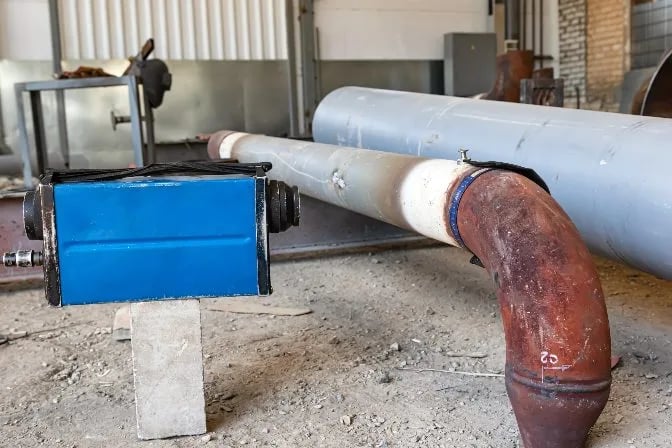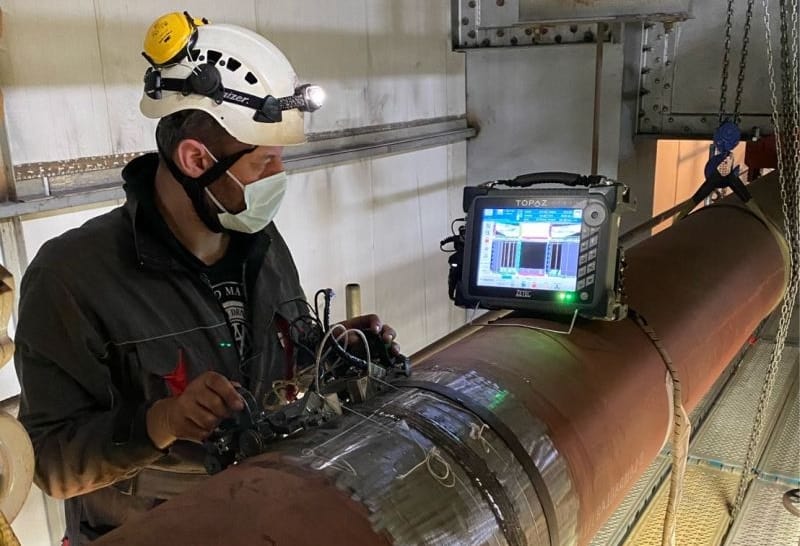Quality Control Ensured: Specialist Pipeline Welding Inspection Providers
Wiki Article
Comprehensive Review of Pipeline Welding Inspection Procedures
In the world of pipe building, making sure the stability and security of bonded joints is vital. Pipeline welding evaluation procedures play a vital role in guaranteeing that welded links satisfy stringent sector standards and requirements. From meticulous pre-welding evaluations to detailed post-weld analyses, a distinct inspection procedure is vital for keeping the structural stability of pipelines. Comprehending the complexities of welding evaluation treatments is not just a regulatory need yet also a fundamental aspect of maintaining the dependability of these vital infrastructures.Pre-welding Assessment Preparations
Prior to beginning the welding procedure, thorough pre-welding inspection prep work are necessary to make sure the stability and quality of the weld joint. These prep work involve a careful assessment of the materials to be welded, the welding tools, and the work setting. Firstly, the products need to be evaluated for any issues, pollutants, or incongruities that can jeopardize the weld. This includes monitoring for appropriate material grades, dimensions, and surface conditions. Pipeline Welding Inspection. Furthermore, the welding devices requires to be examined to validate that it remains in good functioning problem, adjusted properly, and ideal for the particular welding process. Any concerns with the devices need to be addressed without delay to avoid problems in the weld. Finally, the workplace need to be reviewed for sanitation, proper air flow, and precaution to ensure a helpful setup for the welding procedure. By carrying out detailed pre-welding assessment prep work, prospective issues can be identified and settled at an early stage, bring about dependable and premium weld joints.Welding Treatment Credentials
Thorough pre-welding evaluation prep work lay the foundation for the essential process of Welding Treatment Credentials, guaranteeing the stability and quality of the weld joint. Welding Procedure Qualification (WPQ) is an important action in the welding procedure that involves testing and certifying welding procedures to assure they meet particular requirements and demands. The WPQ process generally consists of welding procedure specification development, welding treatment qualification screening, and paperwork of the results.Throughout welding procedure spec advancement, necessary information such as the welding procedure, welding products, joint layout, and welding criteria are defined to produce a detailed procedure. Subsequently, welding procedure credentials screening is performed to validate the recommended procedure's integrity. This screening frequently involves welding examination coupons that go through numerous mechanical and non-destructive tests to evaluate the weld's quality and adherence to the specified requirements.
In-process Weld Evaluation
Throughout the welding procedure, in-process weld inspection plays an essential function in ensuring the top quality and integrity of the weld joint - Pipeline Welding Inspection. This kind of inspection entails keeping an eye on the welding criteria, examining the weld bead development, and spotting any type of possible defects or interruptions as they site web occur. By performing in-process weld assessments, welding drivers can without delay attend to any type of concerns that might emerge, thereby avoiding additional defects and making sure that the final weld fulfills the needed specsUsual approaches utilized for in-process weld inspection include aesthetic examination, fluid penetrant screening, magnetic particle testing, ultrasonic testing, and radiographic testing. Visual assessment is usually the initial step while doing so, allowing assessors to visually assess the weld for surface area irregularities such as splits, porosity, or insufficient blend. Advanced approaches like ultrasonic testing and radiographic screening supply detailed insights into the internal structure of the weld, ensuring that there are no surprise issues that could jeopardize the weld joint's toughness and honesty. Overall, in-process weld evaluation is necessary for preserving the quality and dependability of welded pipes.
Non-destructive Screening (NDT)
Non-destructive Screening (NDT) is a crucial technique utilized in pipeline welding evaluation to assess the stability of weld joints without creating damages to the bonded framework. By using various NDT methods, assessors can evaluate the top quality of welds and determine any kind of problems or stoppages that may jeopardize the structural stability of the pipe. Typical NDT methods utilized in pipeline welding assessment include Radiographic Testing (RT), Ultrasonic Testing (UT), Magnetic Particle Testing (MPT), Fluid Penetrant Screening (LPT), and Visual Screening (VT)RT involves the usage of X-rays or gamma rays to produce pictures of the inner structure of the weld, allowing inspectors to detect flaws such as porosity, fractures, or incomplete combination. In addition, VT includes visual inspection of welds to determine any visible flaws.
Post-weld Assessment and Documents


Paperwork of post-weld assessment findings is vital for preserving high quality control documents and making certain compliance with industry criteria and regulations. Comprehensive reports ought to include info about the assessment techniques utilized, the location like it and nature of any kind of issues located, and any kind of restorative actions taken - Pipeline Welding Inspection. Correct documents not just acts as a record of the weld's top quality but additionally help in future maintenance and inspection procedures
Conclusion

To conclude, pipeline welding evaluation treatments play a vital duty in making sure the quality and honesty of welds. From pre-welding evaluations to post-weld documents, each action is important in preserving the security and efficiency of pipelines. By following established treatments and conducting extensive assessments, potential issues can be identified and addressed before they cause expensive repair services or failures. In general, adherence to appropriate evaluation procedures is essential to the success of pipe welding projects.
From meticulous pre-welding assessments to detailed post-weld evaluations, a well-defined evaluation procedure is necessary for maintaining the structural sturdiness of pipelines. By performing in-process weld evaluations, welding drivers can quickly deal with any problems that might emerge, therefore avoiding additional issues and guaranteeing that the final weld satisfies the called for specs.
Common approaches made use of for in-process weld inspection consist of aesthetic examination, fluid penetrant testing, magnetic bit screening, ultrasonic testing, and radiographic testing.Non-destructive Testing (NDT) is a crucial approach utilized in pipeline welding examination to evaluate the honesty of weld joints without triggering damages to the welded framework. Post-weld examination includes various methods to assess the welds for issues, including aesthetic assessment, color penetrant screening, magnetic particle screening, ultrasonic testing, and radiographic testing.
Report this wiki page